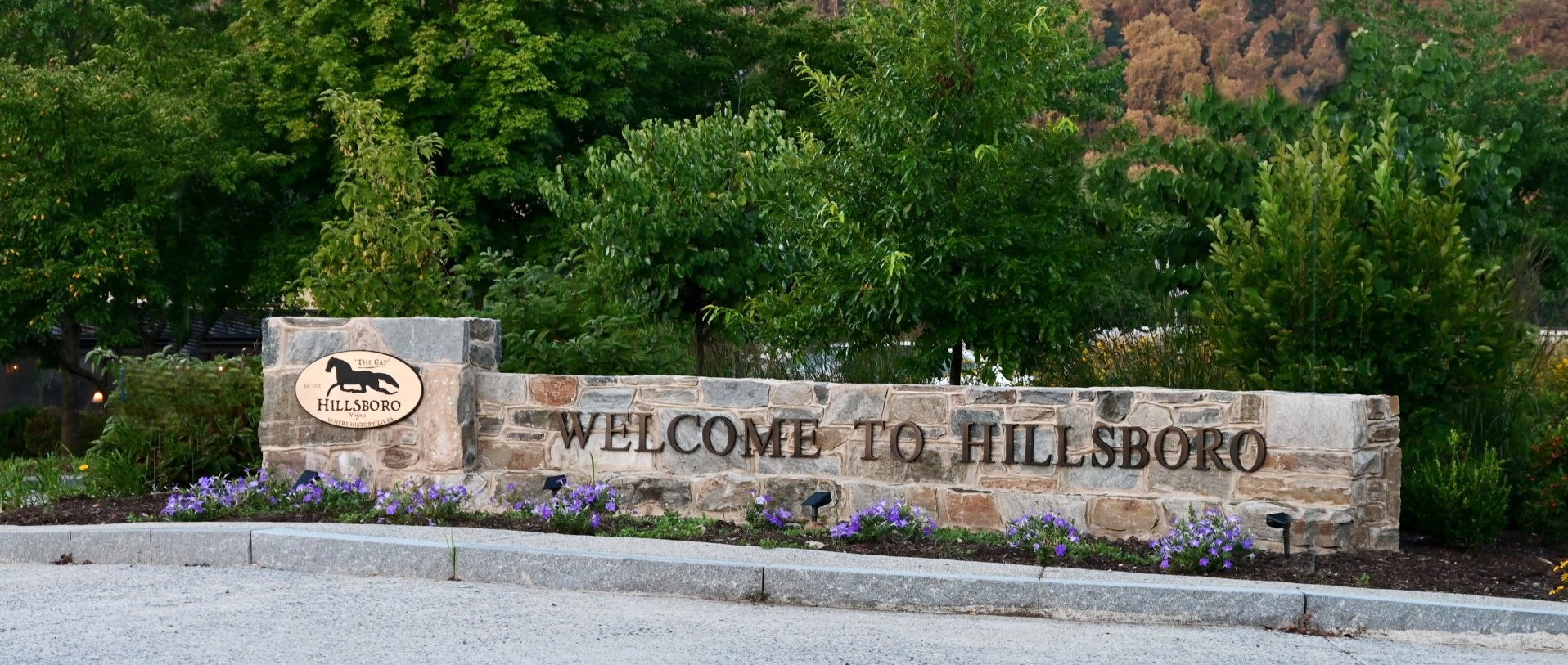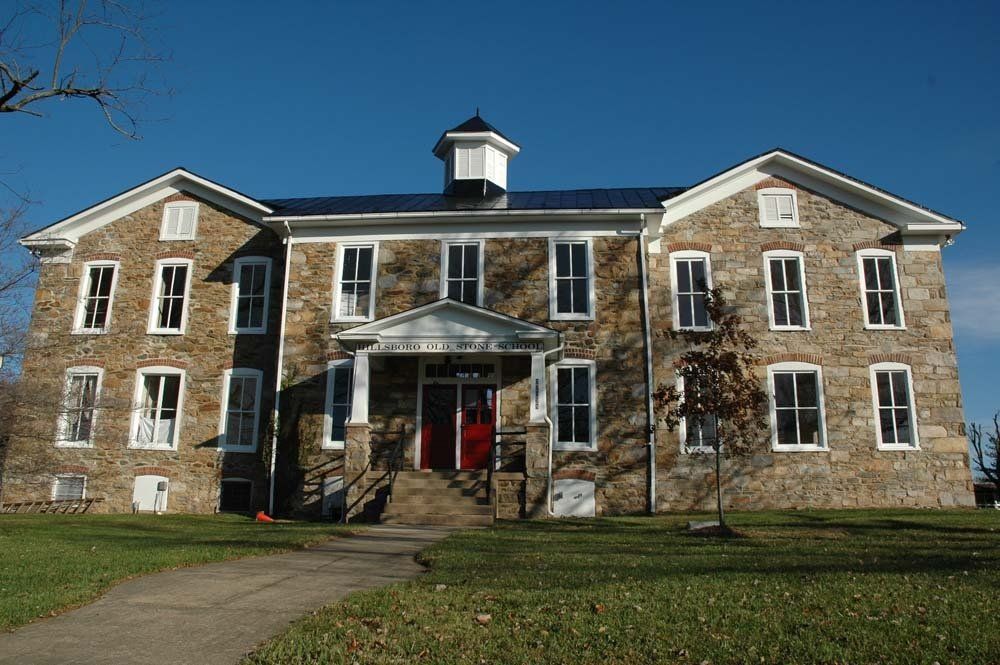Hillsboro Virginia – Gateway to “The Gap”
The Town of Hillsboro, just 50 miles outside of Washington, D.C., is one of the Commonwealth’s best preserved historic assets and a regional hub to a robust agricultural region.
A typical linear 18th-century rural village, most of Hillsboro’s structures still standing today were built tight alongside the dirt road, just wide enough for horse and stagecoach travel and teams of horse and ox pulling wagons of goods and produce. Long before the advent of the automobile, Hillsborough’s “Main Street,” Charles Town Turnpike, lined by structures that served as businesses and homes, bustled during the mill town’s 19th-century heydays. Re-charted in 1872 by the Virginia General Assembly, the Town’s name was also shortened to “Hillsboro.”
Today the town is surrounded by wineries, craft breweries, farm-to-table dining, local artisan shops and outdoor recreation activities.
Many area businesses offer sweeping views of the Blue Ridge Mountains and the rolling countryside, lush and green in the summer and golden with hay and corn husk tops in the fall. The businesses nestled into the valleys on either side of the Short Hill Mountain are dotted with a fall canopy of yellows, reds, oranges and rusty browns.
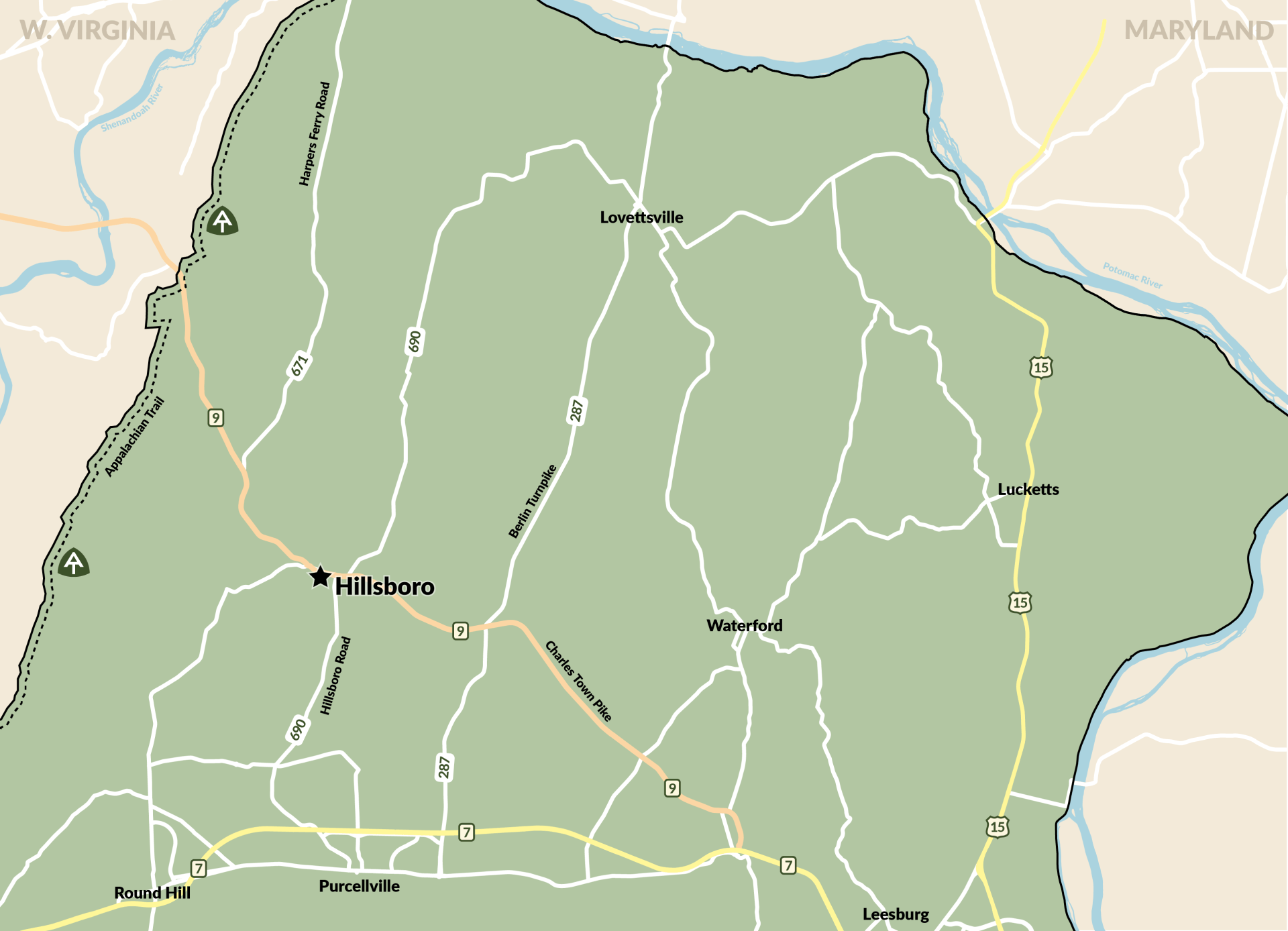
TOWN OFFICE
The Town of Hillsboro Virginia
Office location:
37098 Charles Town Pike, Second Floor
Hours:
Monday – Friday, 9 a.m. – 5 p.m.
Phone:
Email:
Mayor:
Roger L. Vance
SERVICES AND FACILITIES
Utilities
WATER
The Town of Hillsboro provides drinking water services to residents and businesses within the town's municipal boundaries. Our drinking water is derived from two wells located and town and is treated and stored at our water treatment facility located north of town on Spring Lane.
FOR EMERGENCY SERVICE, CONTACT:
A. J. Pallotta, Water Commissioner
WASTEWATER AND SEWER
As part of the Rethink 9 restoration project along Charles Town Pike, the Town of Hillsboro has buried sewage lines along our main street to provide waste water and sewage services to residents in Hillsboro. Final installation and system connection is now underway.
FOR PROJECT UPDATES, CONTACT:
Alison Badger
ELECTRICITY
Electrical services in The Town of Hillsboro are provide by Dominion Energy.
TO REPORT AN OUTAGE OR DOWNED LINES, CALL :
Dominion Energy
(866) 366-4357
TRASH AND RECYCLING
The Town of Hillsboro contracts with American Disposal Service to provide trash and recycling pickup services to residents in town.
Trash is collected from the curb weekly on Wednesday.
FOR QUESTIONS ABOUT PICKUP SERVICES, CONTACT:
American Disposal Services
INTERNET
High speed fiber optic internet services are provided to residents of the Town of Hillsboro from KGI Communications. Guest WiFi services are also available at the Old Stone School.
FOR INTERNET SERVICE ISSUES, CONTACT:
KGI Communications
Facilities
Many rooms and the grounds of the Old Stone School are available for for use by individuals and community organizations for special events.
Click here to learn more about facilities available at The Old Stone School.
CONTACT US
Have a question or concern?
Let us know! Email us using the form below and we'll get you an answer right away.
Thank you for contacting us.
We will get back within one business day.
Please try again later
Town of Hillsboro
37098 Charles Town Pike
Hillsboro, VA 20132
For general inquires:
(540) 486-8001
info@hillsborova.gov
Mayor Roger Vance
mayorvance
@hillsborova.gov

Vice Mayor
Paul Hrenbenak
phrenbenak
@hillsborova.gov

Alison Badger
Wastewater Project Manager
abadger
@hillsborova.gov

HISTORY
The Hillsboro Historic District in Hillsboro, Virginia is a historic district that was listed on the National Register of Historic Places in 1979 when it included 40 contributing buildings within the town limits. Hillsboro was established as "The Gap", but in 1802 the town became Hillsborough. In 1880 the present spelling began to be used. Hillsboro is laid out in a roughly linear fashion along Virginia State Route 9, with lots in the historic district characteristically deep and relatively narrow. The pre-1835 houses in the district are characterized by two-story stone construction with gable roofs. Few new houses were built until the late 19th century, when Victorian houses were built, some with Eastlake detailing. The Hillsboro Historic District was placed on the National Register of Historic Places on May 7, 1979.
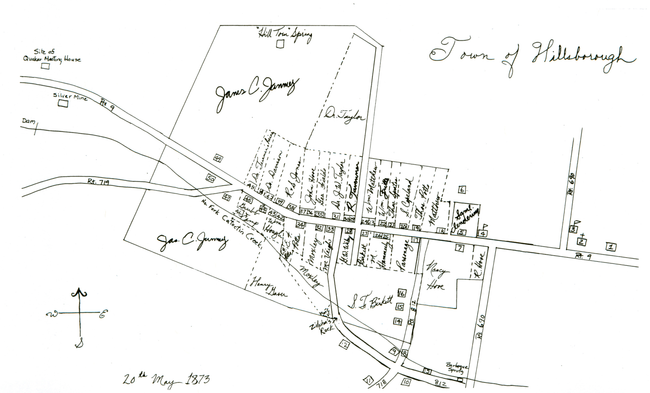
Hillsboro History in Pictures
Pictured above is the recorded plat of the survey establishing the boundaries of the town of Hillsborough on May 20, 1873 with the names of the lot owners written on it.
Hillsborough was incorporated by an act of the Virginia General Assembly on March 3, 1880.
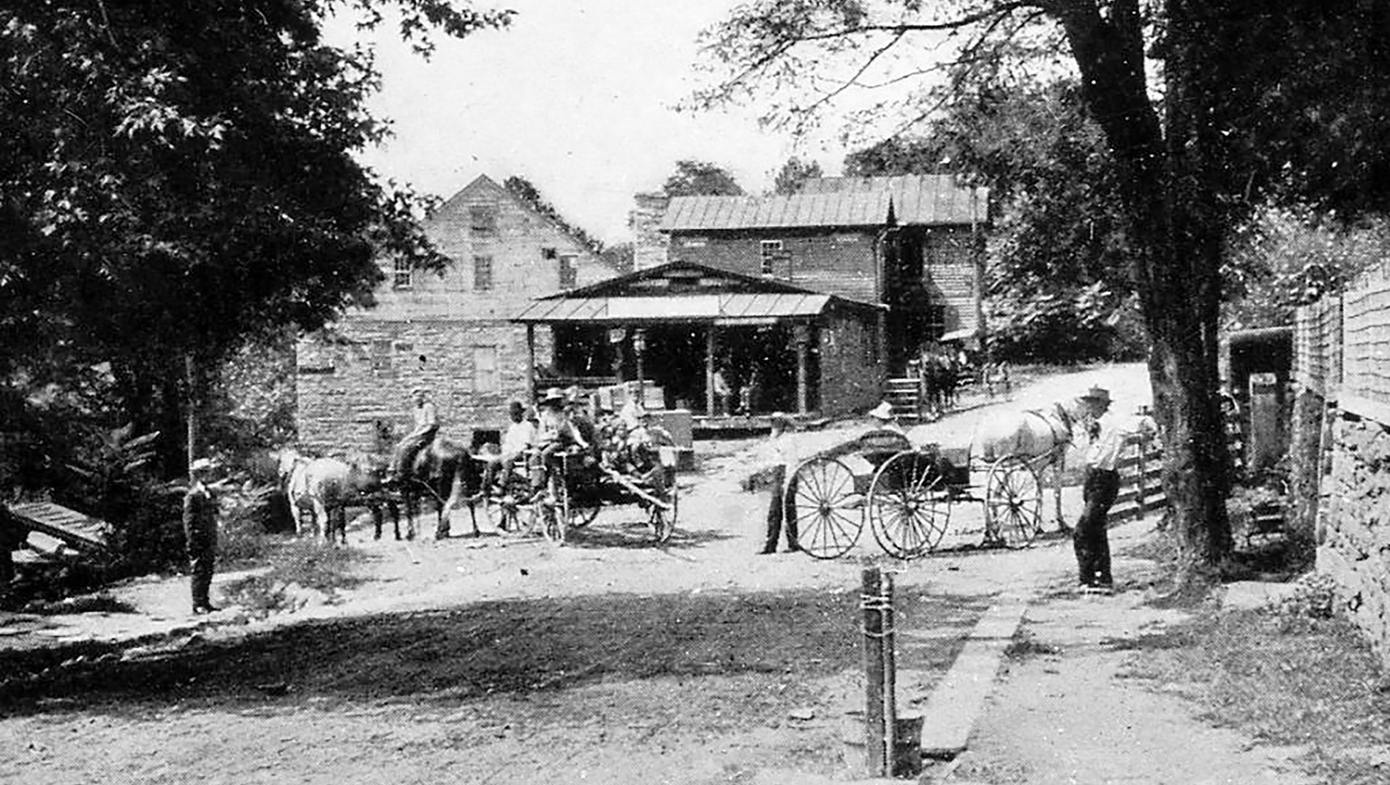
Slide title
Charles Town Pike looking west showing Janney’s Mill on the left and C.C. Bell’s first store in the early 1900’s.
Button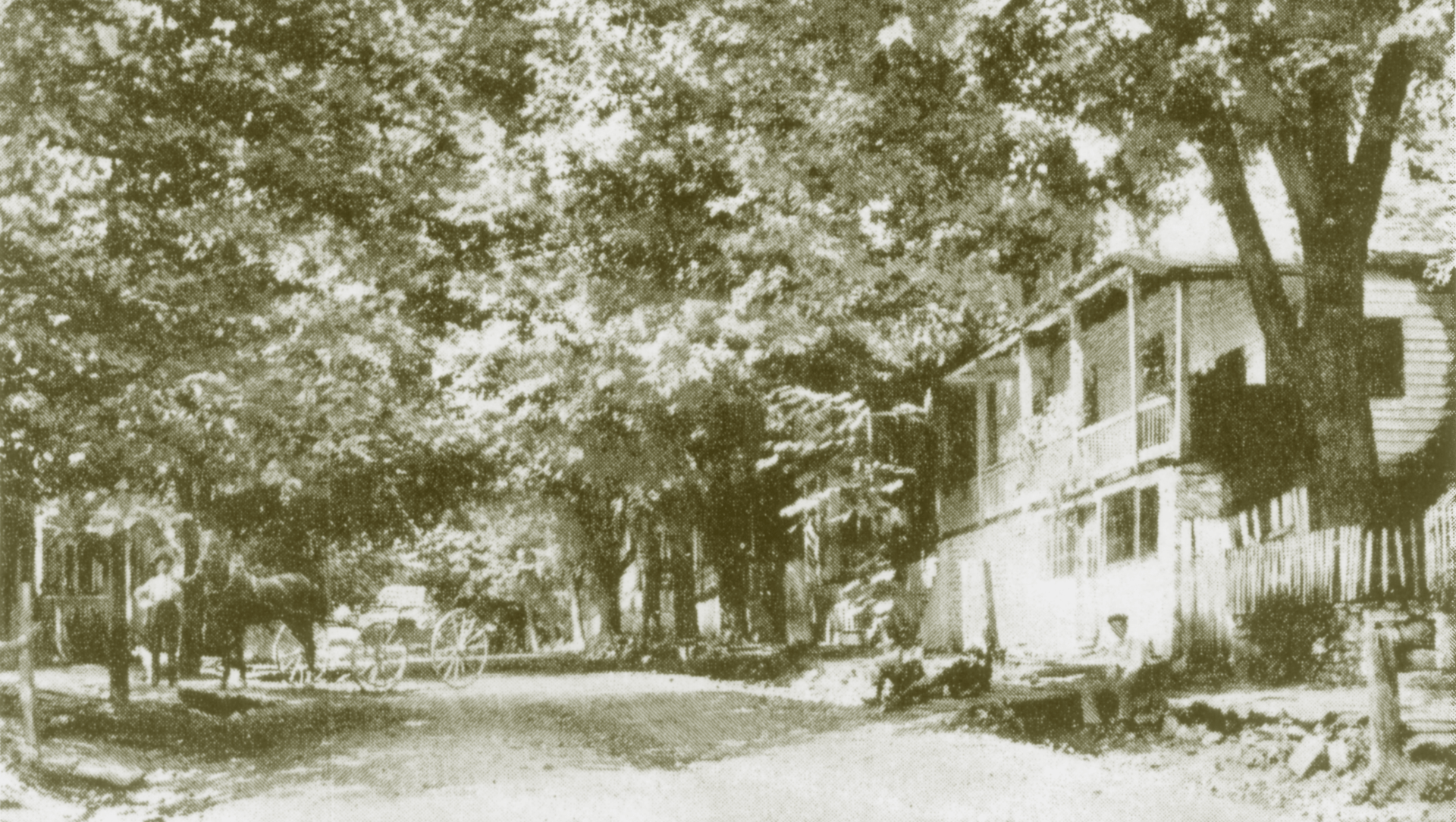
Slide title
Tree-lined Charles Town Pike showing Fritz Tavern on the right in the early 1900s.
Button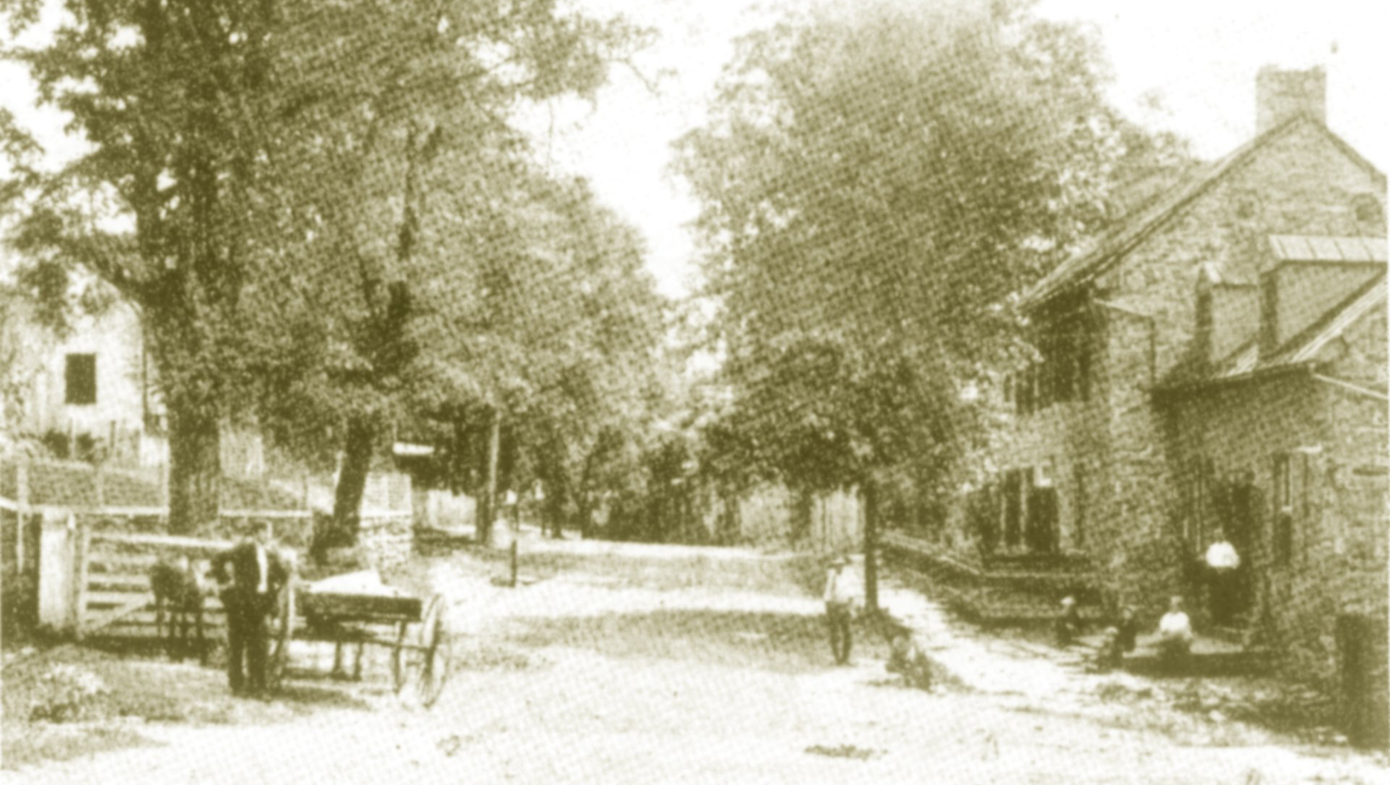
Slide title
Charles Town Pike viewed from the west end of town showing the Moore house on left and the Jonas Potts home on right in the early 1900’s.
Button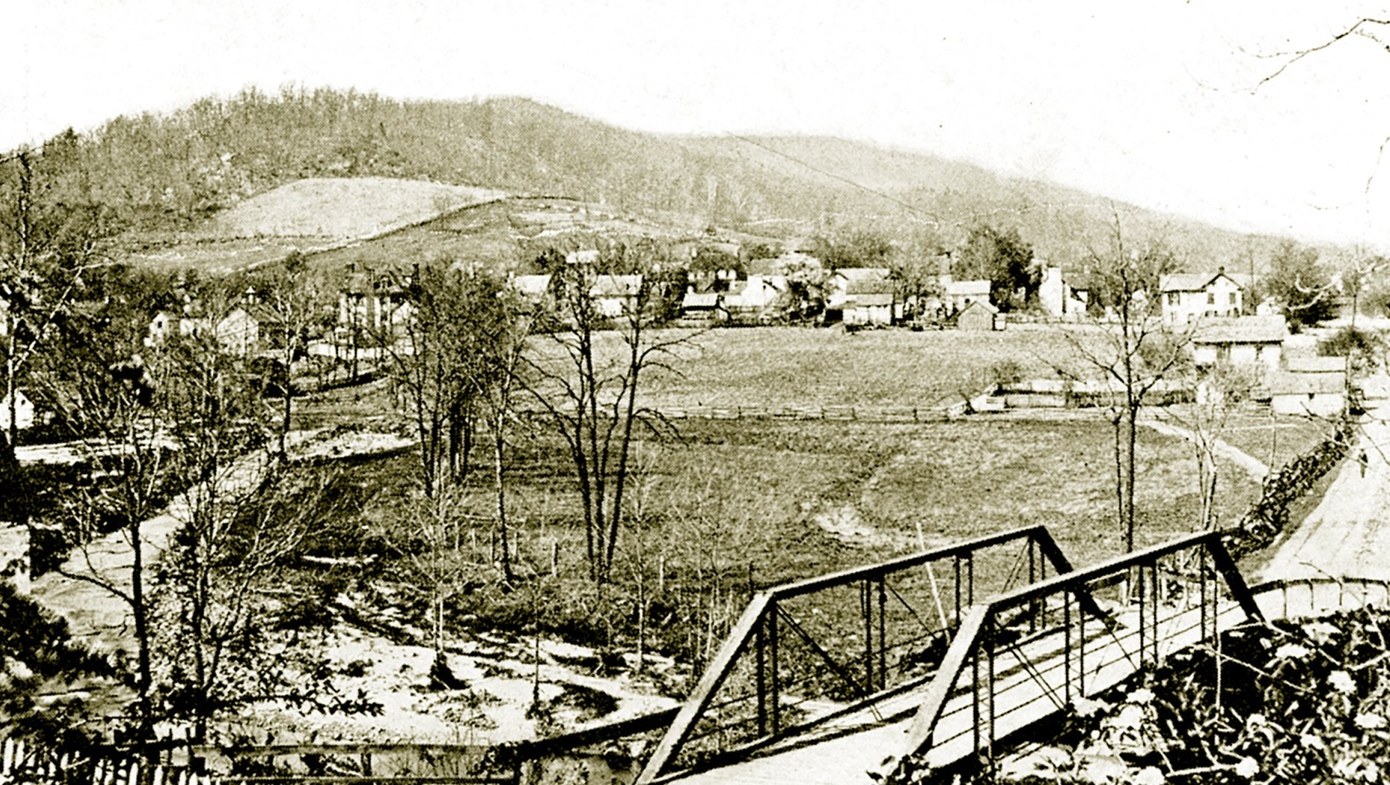
Slide title
A truss bridge over the Cacotin Creek near Gaver’s Woolen Factory about 1900 with houses along Charles Town Pike in the background.
Button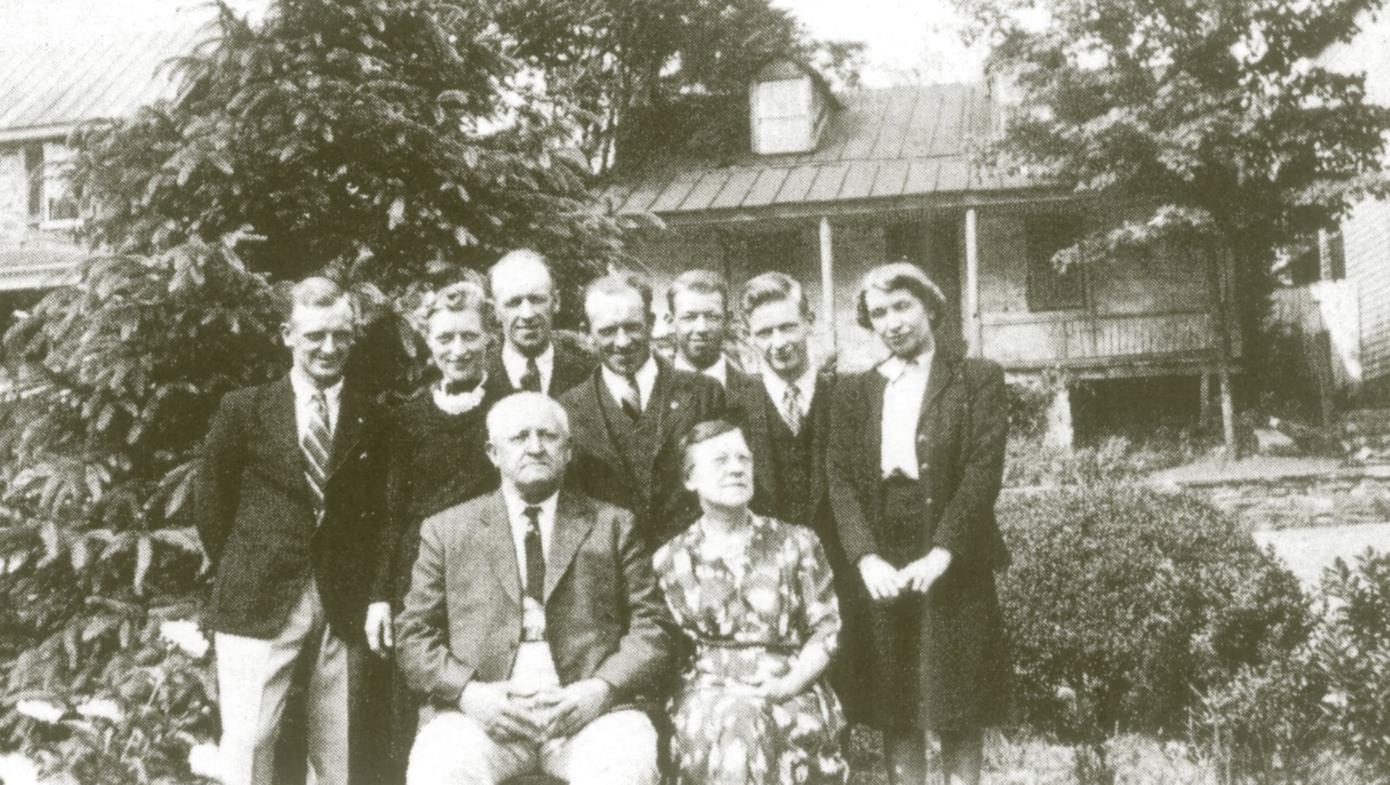
Slide title
The Roberts family in front of Hillsboro’s old house (no longer standing) between the Herrell and James homes along Charles Town Pike.
Button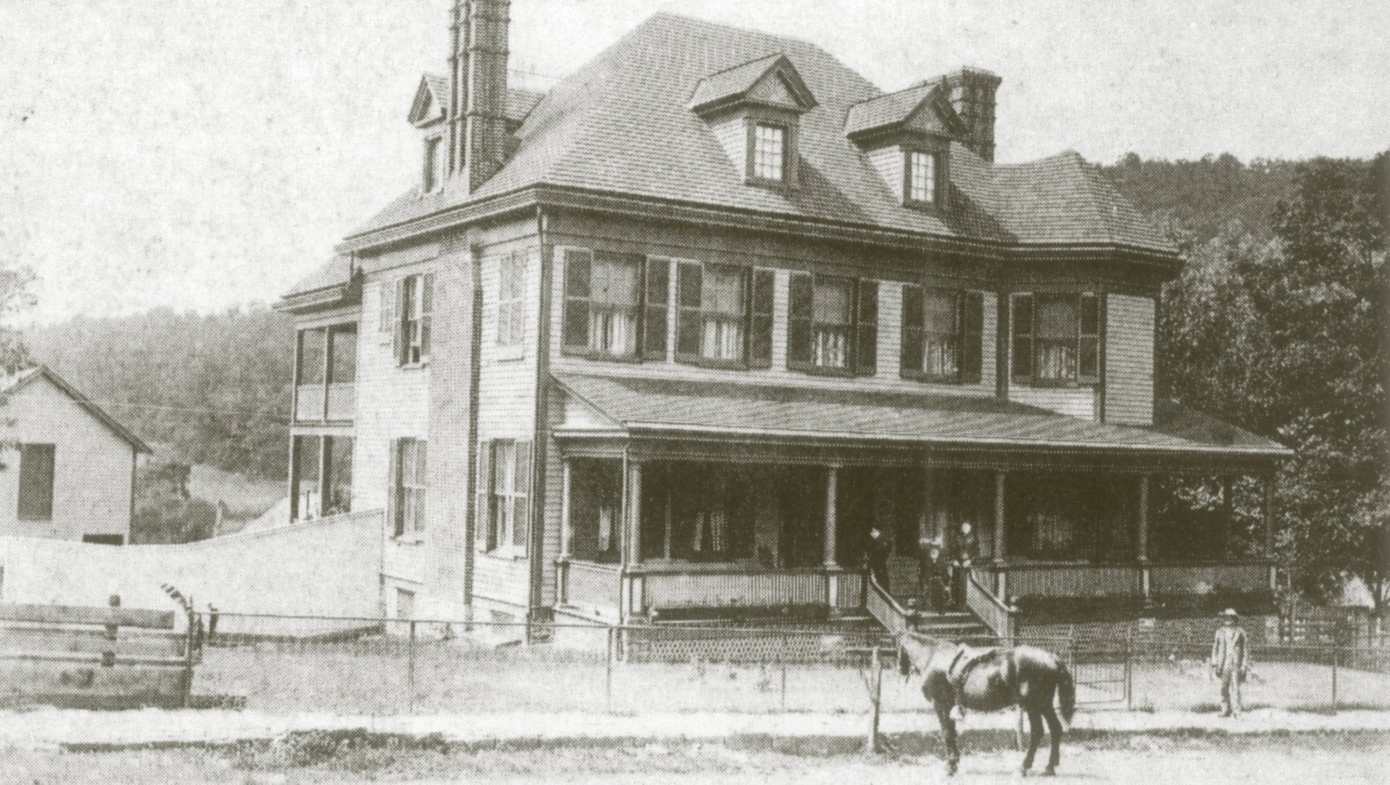
Slide title
The J. Potts Neer home, built in 1890 in the center of town.
Button
Slide title
Home of Jonas Potts and the site of The Hillsboro Seminary around 1900.
Button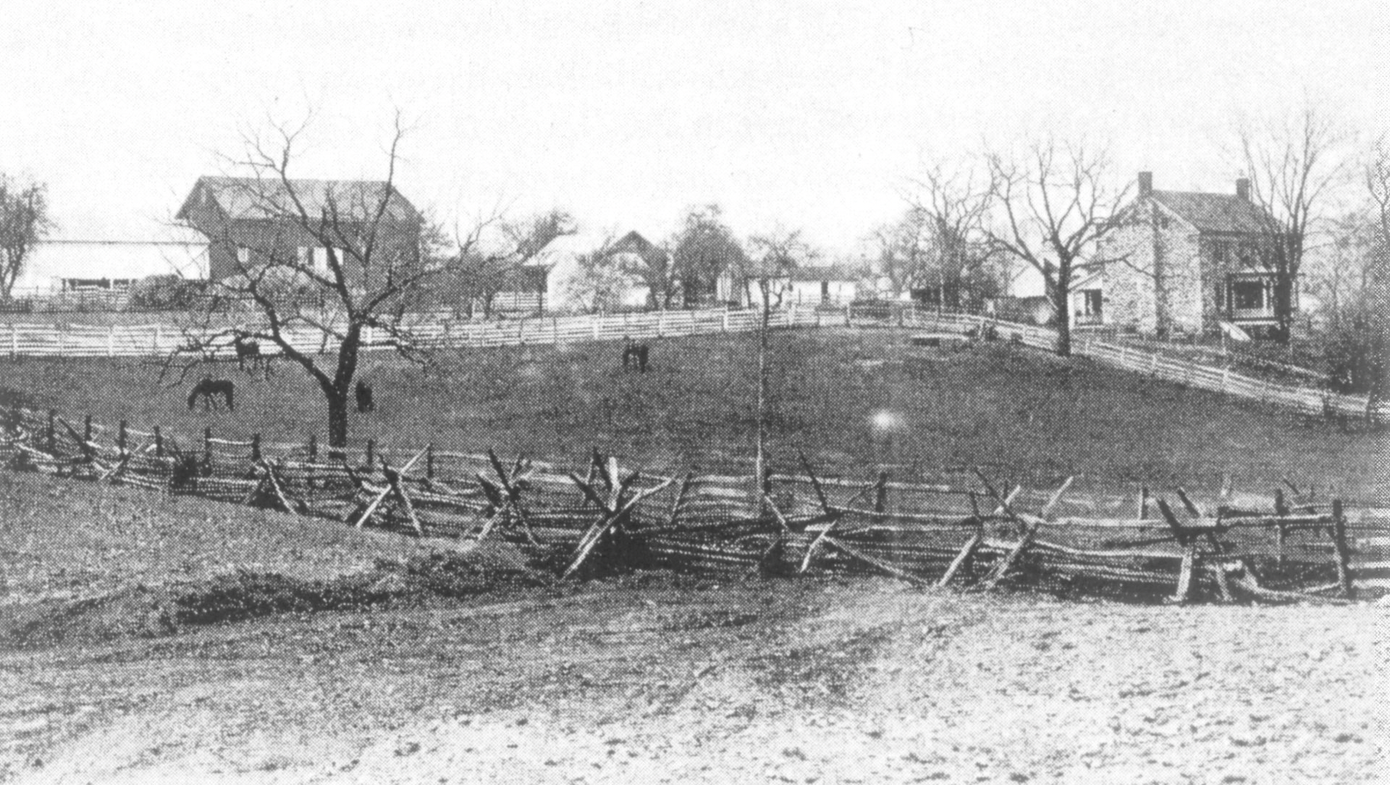
Slide title
Home of Raymond and Lloyd Potts located on David Pott’s original land grant.
Button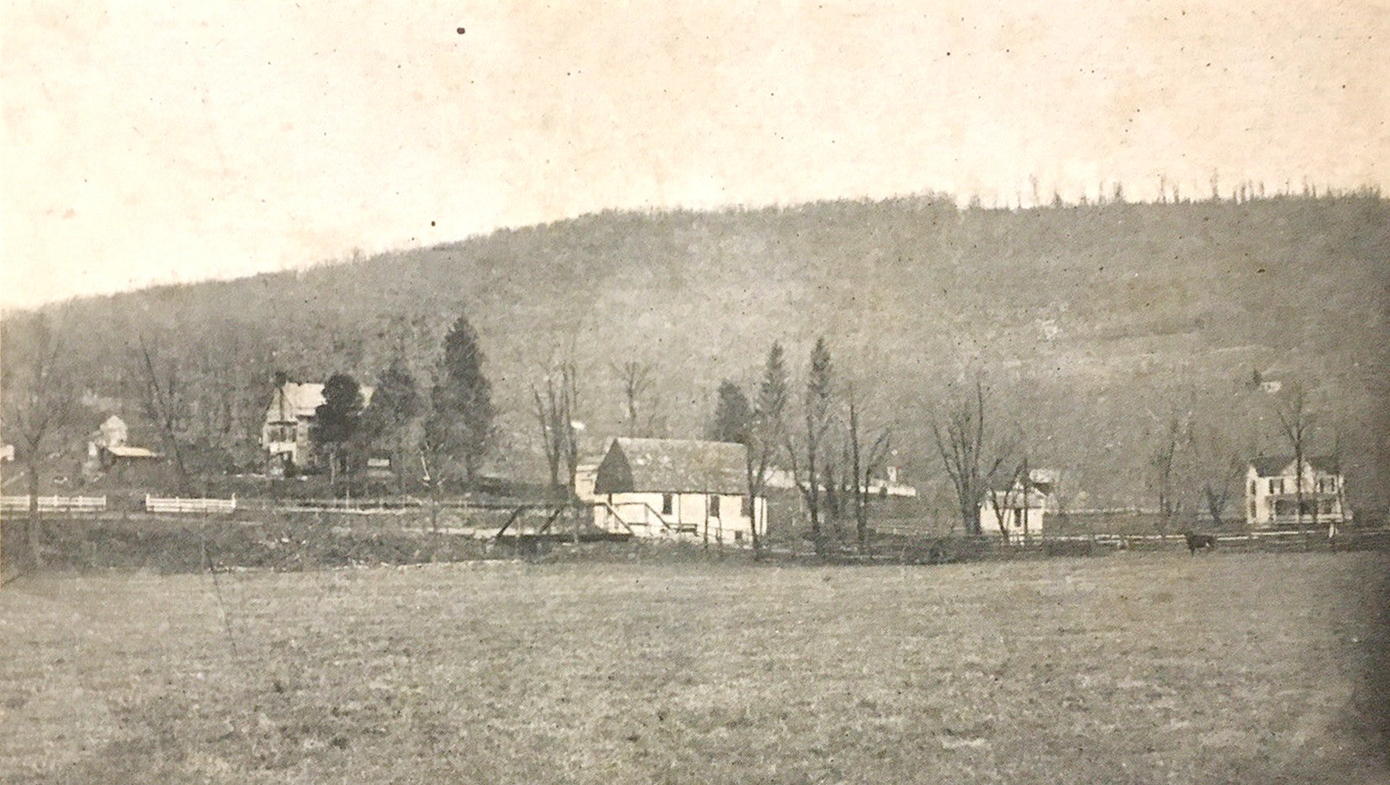
Slide title
A view of houses along Gaver Mill Road in Hillsboro around 1900.
Button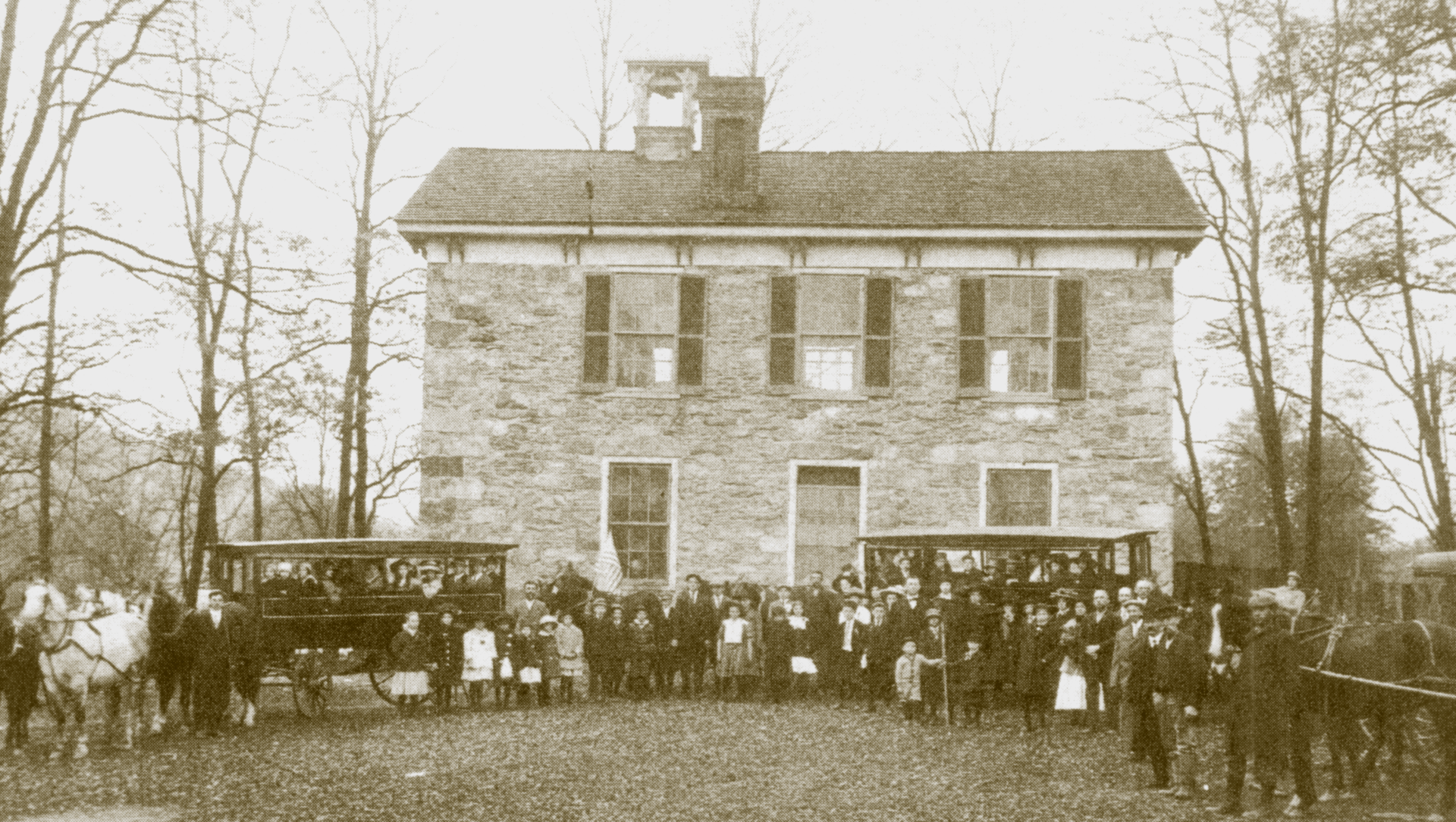
Slide title
Original east section of Locast Grove Academy (today’s Old Stone School) with early school buses in the foreground, about 1911.
Button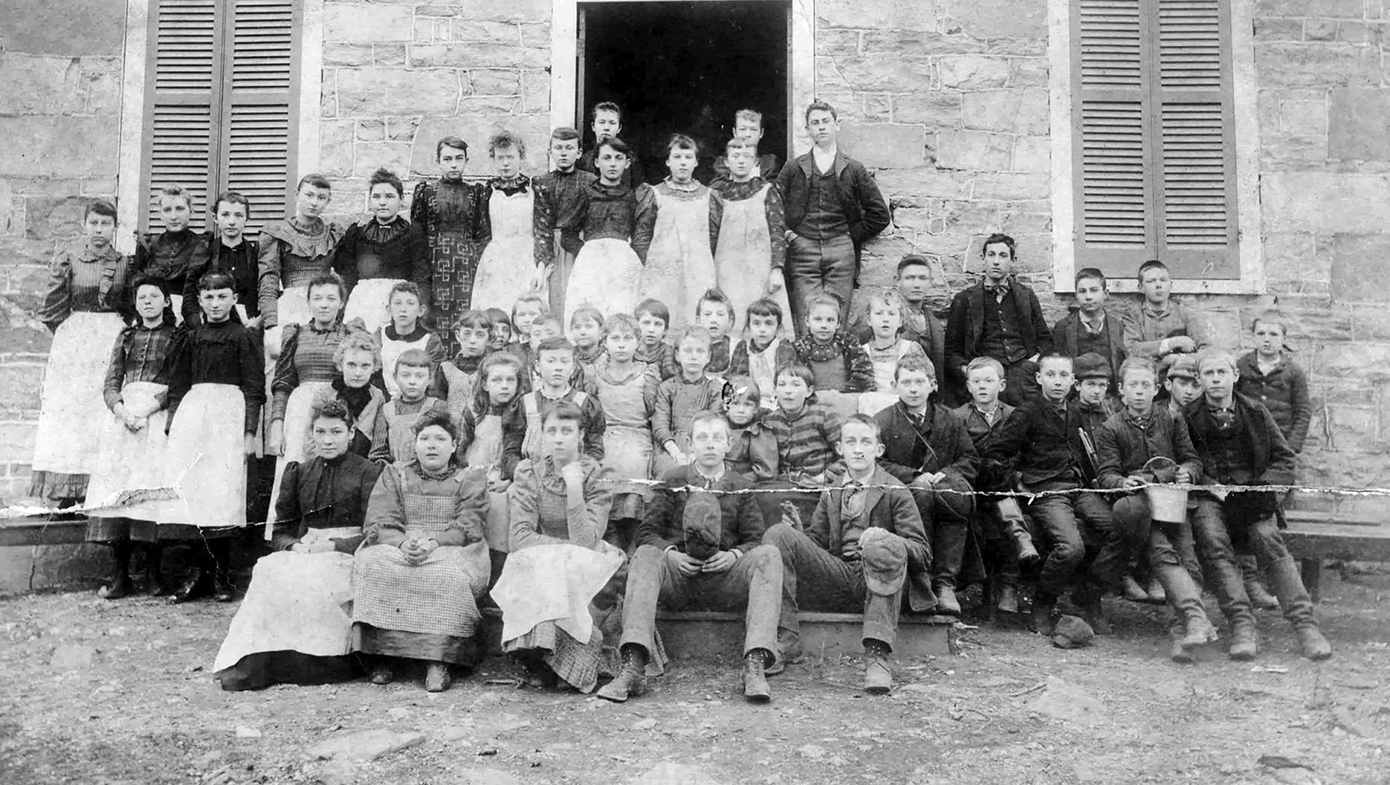
Slide title
Early picture of students at Locust Grove.
Button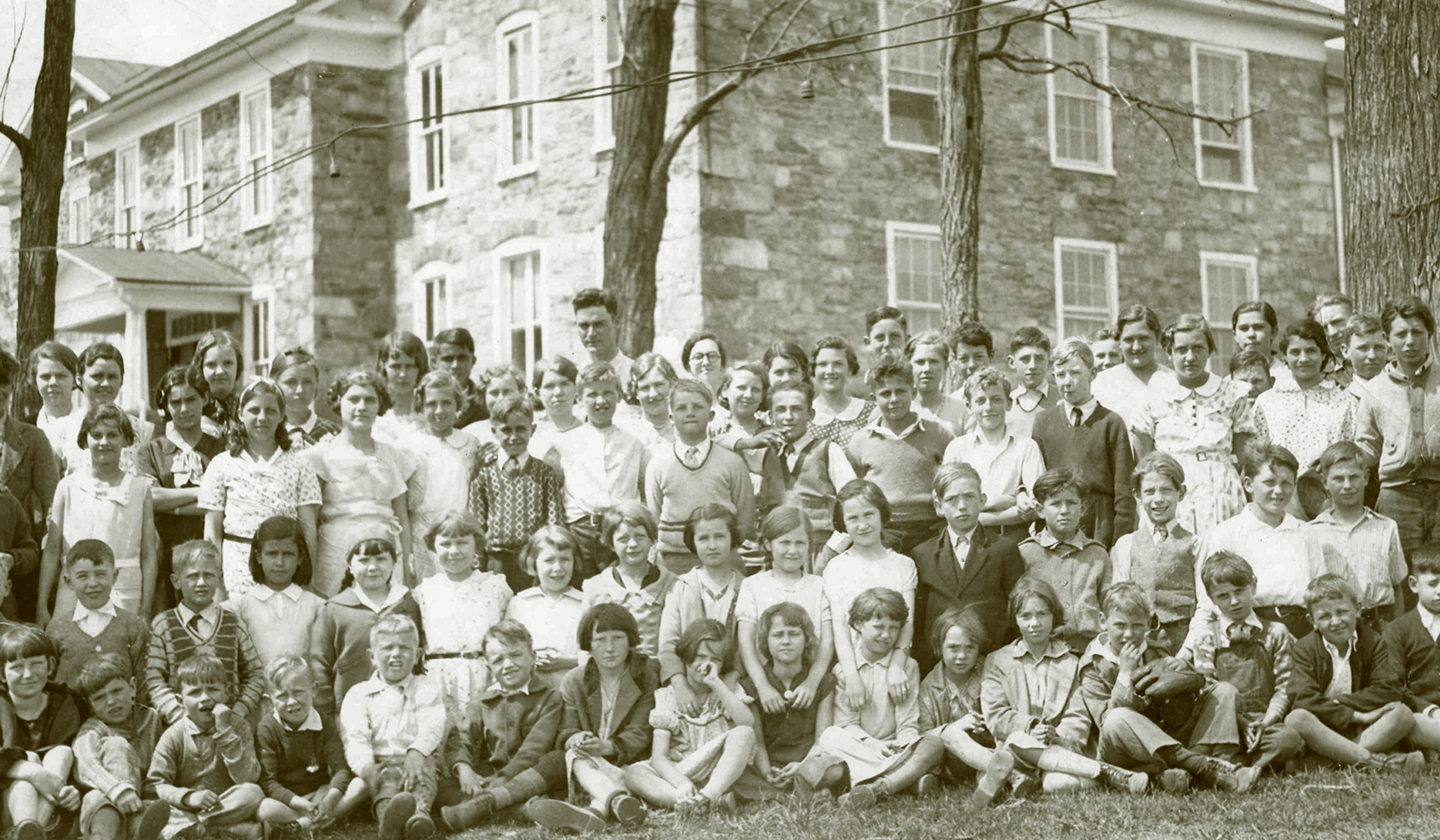
Slide title
Students at the Locust Grove Academy in the first half of the 20th Century.
Button
Slide title
An overhead picture of The Old Stone School with the new Round School addition in the 1960’s.
Button
Slide title
A young Glen Roberts who worked at The Hill Tom Market for most of his life.
Button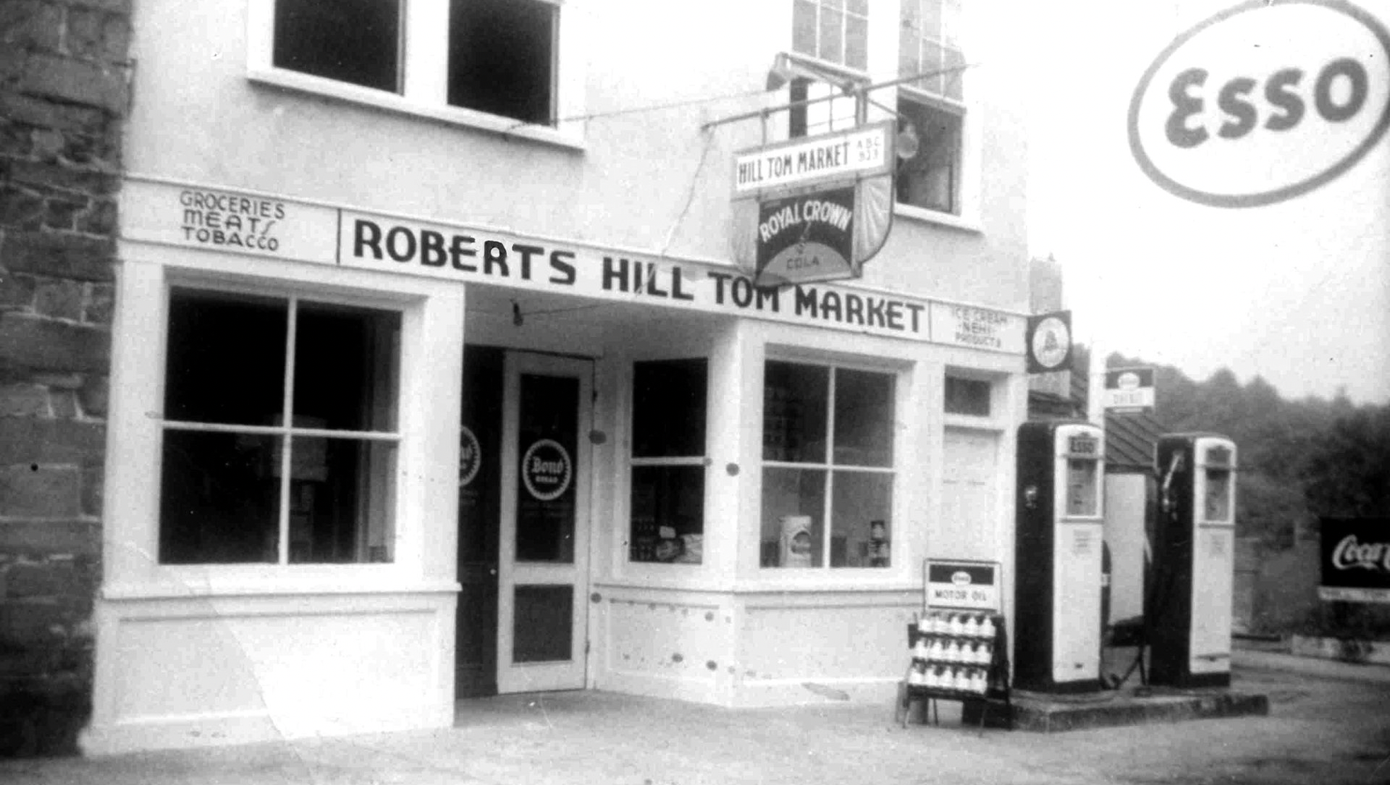
Slide title
The family-owned Hill Tom Market served as a general story and gas station for decades.
Button
220 Years Later, 'Town Made of Stone' Retains Its Idyllic Character
Hillsboro Virginia, originally spelled "Hillsborough", lies in the Hillsboro Gap of Short Hill Mountain, which is part of the Blue Ridge Mountains in northwestern Virginia. The town is about 50 miles (80 km) northwest of downtown Washington, D.C.and 10 miles (16 km) south of Harpers Ferry, West Virginia.
Early settlement in this area was stimulated by the growth of population in Pennsylvania of Germans and Quakers seeking religious freedom. Looking south for new, fertile lands to farm, many Quaker families migrated to the Loudoun area and had a significant impact on its development. The first record of settlement in the Hillsboro area, then referred to as the Gap, is dated 1746. Records of twice monthly meetings of the Gap Quakers, held in one of the houses, date to 1755.
Although there were mills and houses in the Gap in the late 1700s, the town of Hillsboro (spelled Hillsborough until its 1880 incorporation) was not formally established until December 31, 1802 by an act passed by the Virginia General Assembly.
The trustees of Hillsboro named in the act were Mahlon Hough, Samuel Purcell, Jr., Thomas Leslie, Josiah White, Jr., Edward Cunard, Mahlon Roach, and Thomas D. Stevens.
By June 20, 1811, when Henry Griffin bought lot No. 12 on the town plat at auction for $88.50 paid to the trustees, he was required to build "a House thereon Twelve feet Square or equal thereto with a Stone or Brick Chimney to the same and a Shingle Roof on it within Four years of the Day of the Sale of the said lott."
Due to its favorable location on the Vestal's Gap Road, the town grew quickly and in the early 1800s was one of the leading trade centers of western Loudoun, along with Snickerville (Bluemont) and Woodgrove, which has since disappeared. Much of Hillsboro's activity was due to its mills, with as many as five operating at one time, all on Catoctin Creek or its nearby branches."
During this period there typically were three or four doctors in town, five or six general stores, a large tanyard and cooper shop, two shoemakers and three taverns. Two blacksmiths, two saddle and harness makers, two wagon makers and a livery stable tended to the needs found in the horsepowered era. Seamstresses and tailors made clothes from the yarn goods produced by the Gaver woolen mill.
However, the newly constructed railroads and turnpikes bypassed Hillsboro, drawing trade and commerce away from the town. The Civil War events, including the Burning Raid of 1864, devastated the area. During the post-Civil War period, Hillsboro began its transformation from a busy commercial center to a primarily residential community. Homes formerly housing taverns, shops and stores gradually became residences. With the turn of the 20th century, virtually all of the currently existing structures within the town had been built and little has been altered in the majority of the structures since then.
Until 2000 there were no street addresses for the buildings in town; the 60-odd buildings in Hillsboro were referred to by their owners' names or their purposes.
A central feature of the town is its Old Stone School. Originally named Locust Grove Academy, the oldest part of the building, the east wing, was built in 1874. The academy's first principal was Mrs. J.B. White. The Old Stone School, as it is referred to now, is situated at the eastern entrance to the town on Route 9. The stone structure was completed in 1917 with the addition of more rooms on the west side. A junior high school was established there in 1918 and operated for 17 years, until 1935. The brick auditorium was added in 1929. Classes for grades one through seven were taught there until the spring of 1966, when Hillsboro Elementary opened. The school was the hub of the community in the early 1900s. Community plays were frequently held there with a local orchestra that played during intermission.
Located next to the Old Stone School is Hillsboro Charter Academy, which opened in 2016 inside the former Hillsboro Elementary.
The Hillsboro Historic District was placed on the National Register of Historic Places on May 7, 1979.
In 2015, Hillsboro was the third smallest town in Virginia in population.
On December 28, 2016, the town limits officially tripled to 172 acres (70 ha). The zoning change brought the Old Stone School inside the town limits for the first time.
In June 2021, Hillsboro completed ReThink9, a $30 million infrastructure project which included creating two roundabouts on State Route 9 east and west of the town, traffic-calming streetscaping, burial of all overhead utilities, a new safe drinking water system, wastewater management infrastructure as well as an underground stormwater management system.
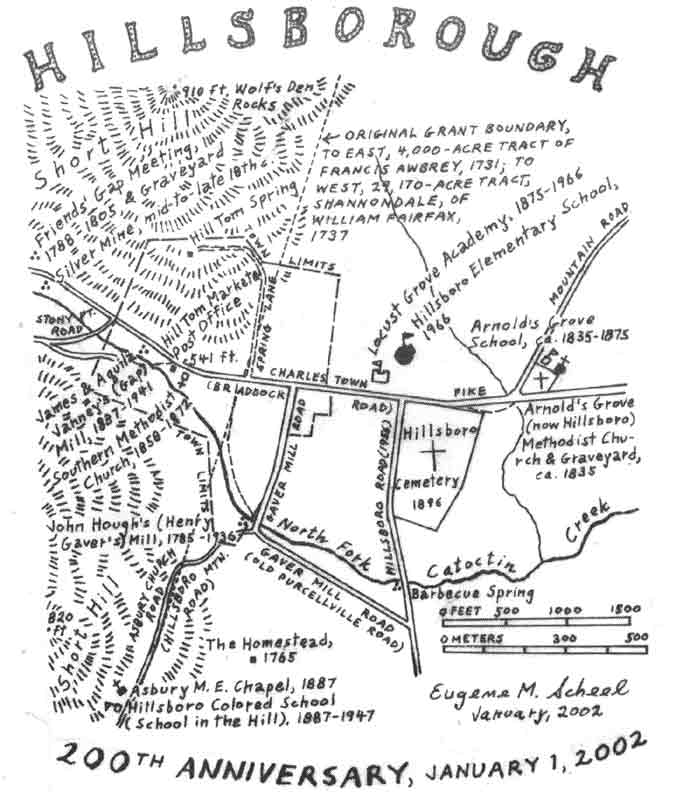
Map by by
Eugene Scheel
A Waterford historian and mapmaker.
Notable Hillsboro Residents
Susan Koerner Wright, the mother of the Wright brothers, was born just south of Hillsboro.
Author Byron Farwell was mayor of the town for three terms from 1976 to 1982. Other mayors included Sandy Muir and Alix Spaith.
Mary Virginia Gaver, a leader in library science, whose family owned and operated Gaver Woolen Mill in Hillsboro in the 1800s.
Want the latest Hillsboro news?
Sign up here to receive Hillsboro e-news alerts.
Stay Current
Thanks for signing up to our newsletter.
(To unsubscribe, send request to info@hillsborova.gov)
Please try again later.


